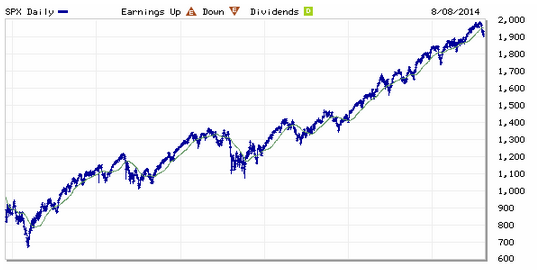What Happens When the Fed Goes Home
Post on: 25 Июль, 2015 No Comment

I have written previously about the signs that investors can watch for to get an idea of when interest rates may be headed higher. One of these signs is a change in bond purchase patterns by central banks such as the Federal Reserve. At last week’s meeting the Fed announced that the Fed Funds rate would remain low and that it would continue with its bond buying program, commonly referred to as Quantitative Easing or QE.
As the Fed continues its purchases and its holdings of fixed income securities grows, many investors are wondering what will happen when the Feds stance changes. They are wondering what happens when the Fed not only stops buying bonds, but also starts raising rates and selling the bonds that it currently hold? Here is a snapshot of just how big the Fed’s balance sheet or their holdings of bonds and other securities has become:
A recent paper by researchers at the Fed suggests that when the Fed does start to enact tighter monetary policy that it will move in a series of steps as outlined below. (Keep in mind that the paper was written by researchers at the Fed and may not reflect the views of the Board of Governors, which sets monetary policy.)
1) Stop reinvesting the maturing principal from the bonds it currently holds
2) Communicate new guidance on the Fed Funds Rate out to the market
3) Begin raising the Fed Funds Rate
4) Sell agency securities (debentures and MBS ) that it holds. This would take place over a 3-5 year period with the goal of moving towards a more “normal” sized balance sheet.
The base case timeline mentioned in the paper is to begin these actions in 2014, with projected balance sheet normalization by 2018. I should note that since this paper was published in August, the Fed announced that it will not look to raise interest rates until the unemployment rate is below 6.5% (currently at 7.9%), which may impact the timeline for these steps. Also since the release of the paper, the Fed announced QE3 and began buying an additional $40 billion worth of MBS each month, further expanding its balance sheet.
Regardless of when it begins, once the Fed modifies guidance on monetary policy (or if the market expects them to modify guidance), the market will quickly begin pricing in anticipated rate hikes and security sales. Given that the weighted average maturity of Fed holdings is now at the longer end (over 6.5 years), the curve will likely steepen in anticipation, with long-term rates initially rising more than short-term rates.

The number one question on investors’ minds then is: How high will rates go and when? The Fed paper estimates that the Fed Funds Rate could touch 3.5% by 2020, and that 10-year yields will approach 5% over the same time frame. However, the assumptions behind these projections have GDP growth in the 4-5% range, which does not seem realistic given recent economic data (2012 GDP growth at 1.5%) and deleveraging that will likely persist for years.
Our own estimate of 10-year yields, which is based on more modest growth and inflation projections, is that they should be around 3.5%-4% if not for the actions of central banks and heightened global concern over the European and US fiscal situations. Barring a dramatic improvement in economic conditions, this seems like a more reasonable post-accommodation level for rates.
Perhaps more interesting than the level itself, is the speed at which this level is reached. The current shape of the US Treasury yield curve implies that 10-year yields will gradually rise from about 2% today to around 3.3% by 2018. This means that the market is not anticipating a strong reaction to Fed tightening, which could make it that much more vulnerable if tightening begins earlier than expected. If investors begin to think rates will rise faster than originally expected, they may begin selling bond holdings, including mutual funds and ETFs, driving rates higher and creating a self-fulfilling upward move in rates, at least temporarily.
Ultimately though, rates should be held in check by the economic realities of modest growth and by demographic changes supporting large allocations to fixed income, such as baby boomers needing income in retirement. Additionally, higher yield levels may also attract new investors who had long ignored bonds while waiting for a selloff.
What to do about this? One thing we can count on: The next major movement in interest rates is likely to be higher and not lower, and it’s just a question of when. As we’ve said before, we advocate reducing interest rate sensitivity and we favor less rate sensitive investments such as credit, municipals, and floating rate.
Matt Tucker, CFA, is the iShares Head of Fixed Income Strategy and a regular contributor to the iShares Blog . You can find more of his posts here .














